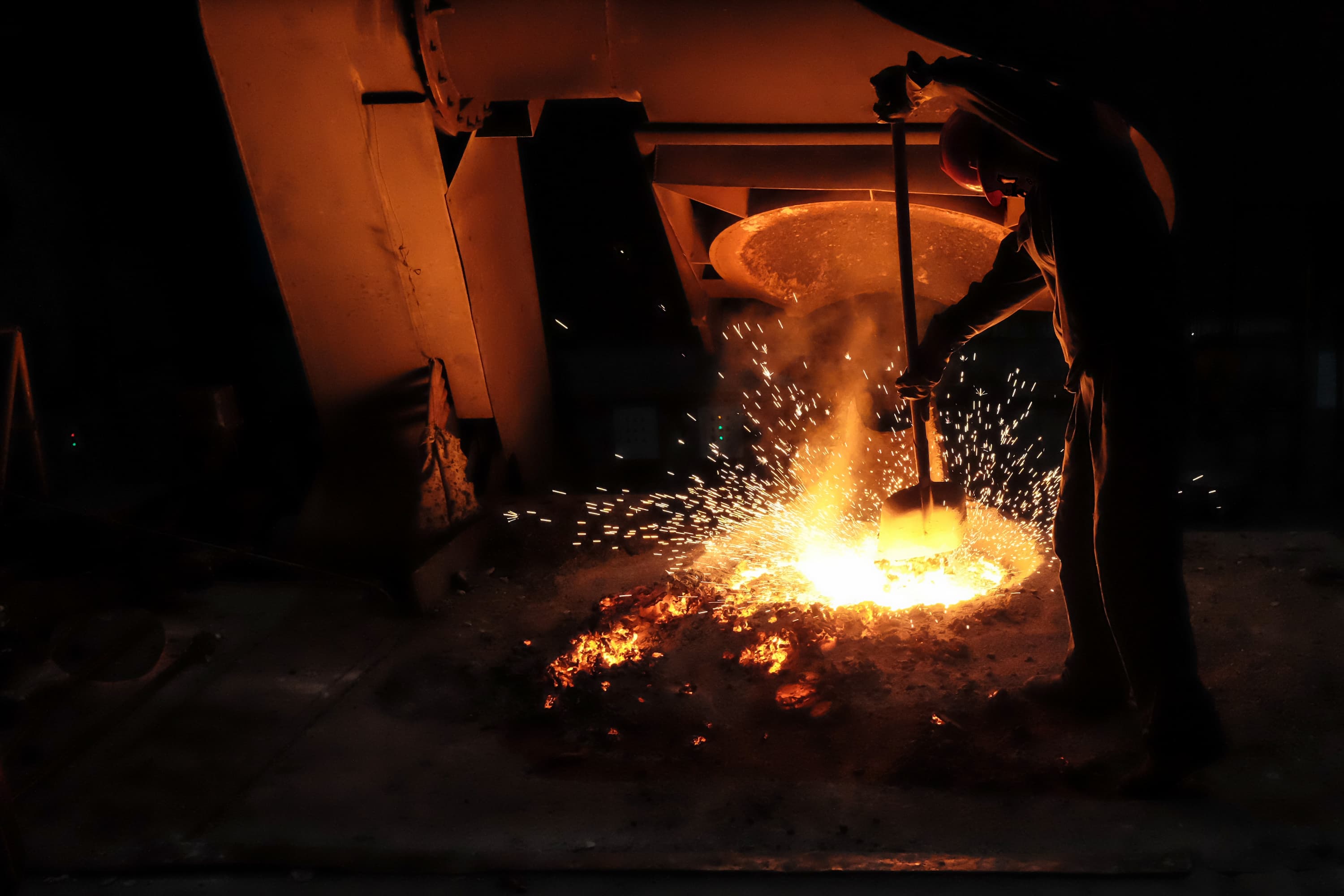When it comes to engineering, metal pouring is a complex process in manufacturing that can lead to common defects if done incorrectly.
The quality of the finished casting comes down to how well the part was designed, how well the mold was designed, and how carefully the pouring was done. If not done properly, even the slightest pouring metal defects can cause big problems further down the production line.
In this blog post, we'll take a look at some of the most common pouring metal defects and how to avoid them. By understanding these defects and how to fix them, you can keep your production lines running smoothly and ensure that your products meet and exceed quality standards.
Metal Pouring: The Crucial Step
After the mold is designed and prepped, it's time to pour the metal. Controlling these parameters effectively is critical to casting a high-quality part. As molten metal enters the part, air or gas is compressed and discharged through the mold's vents. To produce a high-quality casting, the molten metal must fill the mold and then cool and solidify in a controlled, uniform manner.
Deviations from this ideal scenario are when common pouring metal defects tend to appear. . Whether it is variations in the cooling pattern, incomplete fusing, or hollow areas in the casting, these defects affect the overall quality of the casting and should be minimized.
Prior to metal casting simulation software, trial and error was the only solution to producing superior castings. With metal pouring simulation and computer-aided design, engineers can now foresee where common metal pouring defects might occur before any metal is even poured.
Common Pouring Metal Defects
The first step in preventing defects is knowing what to look for. This means being familiar with the aspects of a product that can go wrong. Once you know what casting defects to look for, you can take steps to prevent problems before they occur.
Porosity
Often broken into two different kinds, porosity typically comes from shrinkage or air entrapment. Porosity is one of the most common defects that occurs during casting and requires a great deal of attention to minimize the frequency and impact.
In shrinkage porosity, cavities are formed inside the cast as the molten metal cools and shrinks in size. Variations in the temperature of the flow throughout the mold can lead to certain sections cooling and shrinking faster than others; avoiding these variations results in a more uniform casting.
Air entrapment porosity is just as it sounds. When molten metal flows into a mold at a turbulent pace, air can become trapped inside. As the metal flow cools and solidifies, these pockets or bubbles of air don't have enough time to escape. The metal part hardens, trapping the air in the cast part and creating a defect and weak point.
Hot Spots
When different sections of the mold cool at different rates, hot spots can form creating areas with low density. Due to the fluctuating cooling process of the metal, casting sections come out with varying mechanical properties.
The right mold can reduce or even prevent hot spots in metal castings. These molds work by evenly cooling the casting so that there are no large areas of uneven temperatures, like along the edges where they meet air faster.
Cold Shuts
If two pieces of molten metal meet and they don't fuse together properly, it leaves a weak spot in the metal. This happens when the metal flows cool too quickly before they can fuse. Thin cross sections and low pouring temperatures are what typically cause this to happen. To prevent cold shuts and other pouring metal defects, make sure to check for the right fluidity prior to pouring
Blowholes
Blowholes are formed during turbulent flow conditions or when there is too much moisture in the mold. Gas becomes trapped underneath a thin layer of metal making it harder to detect. The best way to prevent blowholes is by ensuring that the flow of metal is smooth and that the mold is properly prepared.
Misruns
Another common pouring metal defect occurs when the pouring temperature is too low and the molten metal solidifies before filing in sections of the mold. This premature cooling process results in a misrun.
Misruns can often be corrected by increasing the pouring temperature, giving the flow more time to fill the mold before solidifying. Thin sections in the gate design can also lead to misruns. Adjusting the gate design, pouring speed, and temperature is typically sufficient to prevent misruns.
Casting Simulation Software: Better Parts with Fewer Pouring Metal Defects
Simulation software like THERCAST® saves time, money, and much-wasted metal. By predicting how the molten metal will flow through the mold, engineers can tweak parameters in a virtual environment without wasting time iterating on an actual mold.
Visualizing how the molten flow will enter the mold ensures that no voids will be left. These visualizations can also predict turbulence and air entrapment, leading to common pouring metal defects. Making changes to the mold or pouring parameters at this stage is much more efficient than scrapping parts when testing the mold.
Contact Transvalor Americas to learn more.



